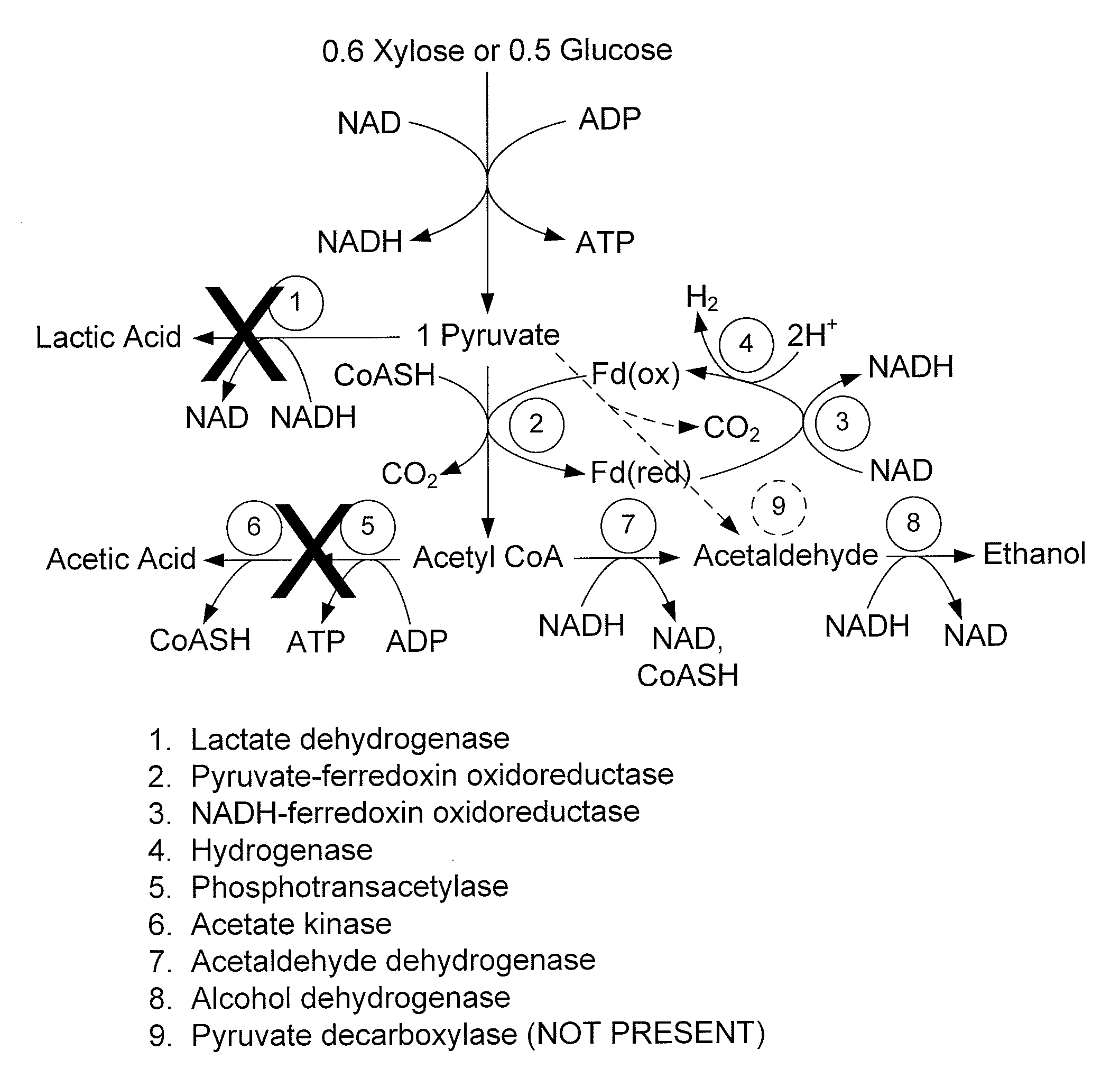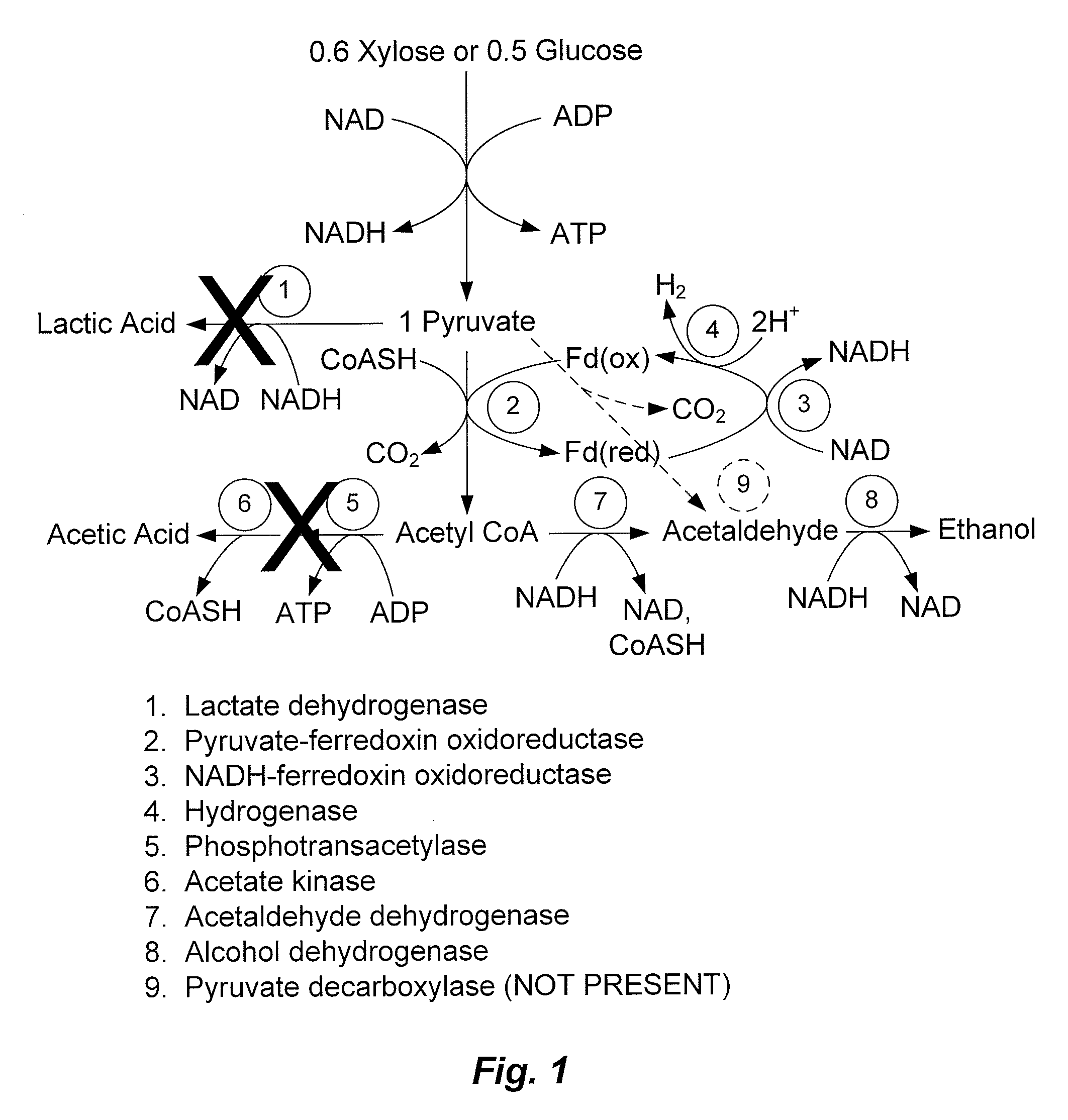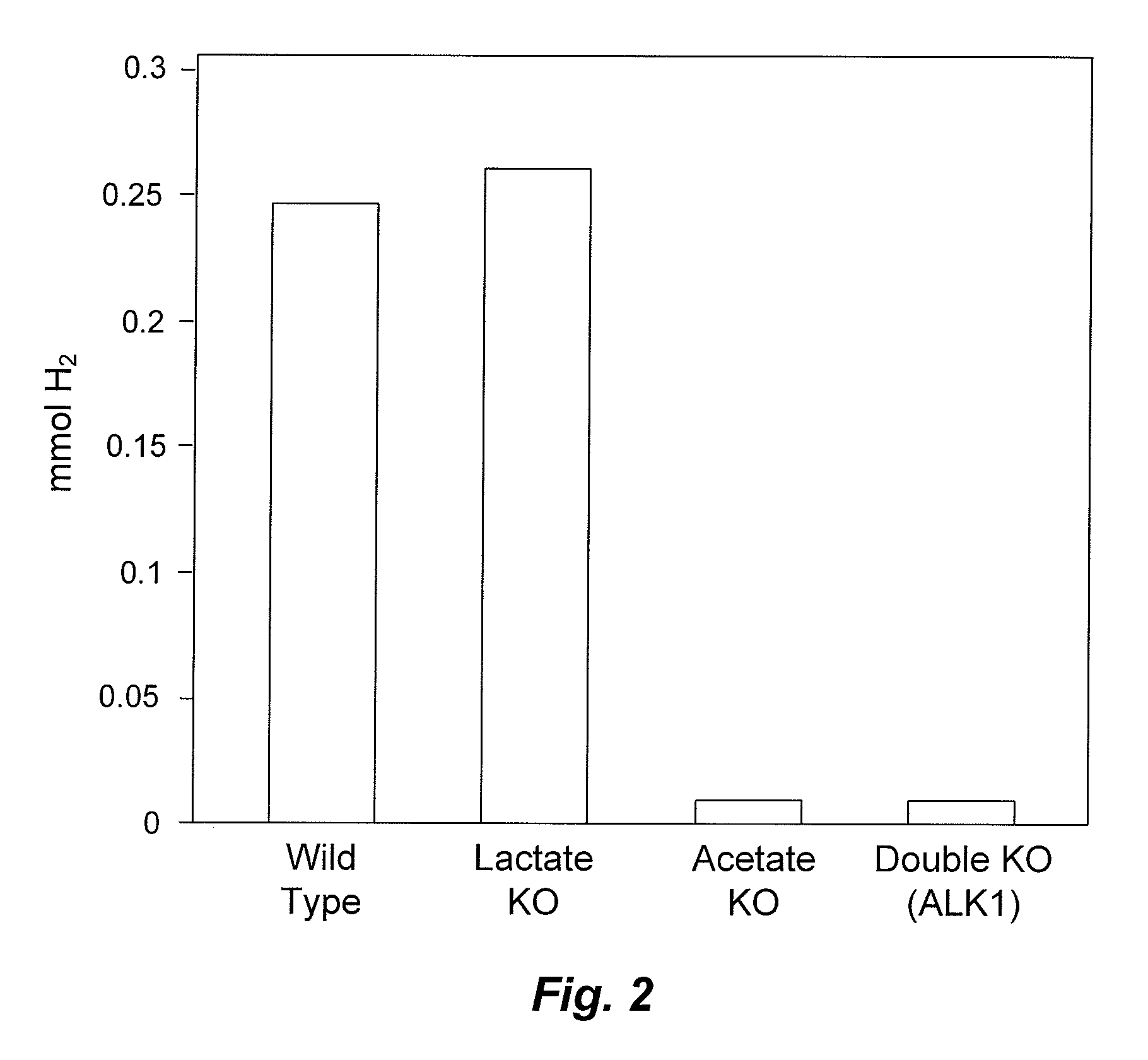Thermophilic Organisms For Conversion Of Lignocellulosic Biomass To Ethanol
a technology of thermophilic organisms and lignocellulosic biomass, which is applied in the direction of biofuels, enzymology, transferases, etc., can solve the problems of affecting the performance of ethanol-producing organisms, and affecting the production of ethanol
- Summary
- Abstract
- Description
- Claims
- Application Information
AI Technical Summary
Benefits of technology
Problems solved by technology
Method used
Image
Examples
example 1
Production of the ALK1 Strain
Materials and Methods
[0040]Thermoanaerobacterium saccharolyticum strain JW / SL-YS485 (DSM 8691) is a thermophilic, anaerobic bacteria isolated from the West Thumb Basin in Yellowstone National Park, Wyoming (Lui, S. Y; Gherardini, F. C.; Matuschek, M.; Bahl, H.; Wiegel, J. “Cloning, sequencing, and expression of the gene encoding a large S-layer-associated endoxylanase from Thermoanaerobacterium sp strain JW / SL-YS485 in Escherichia coli” J. Bacteriol. 178: 1539-1547, 1996; Mai, V.; Wiegel, J. “Advances in development of a genetic system for Thermoanaerobacterium spp: Expression of genes encoding hydrolytic enzymes, development of a second shuttle vector, and integration of genes into the chromosome” Appl. Environ. Microbiol. 66: 4817-4821, 2000). It grows in a temperature range of 30-66° C. and in a pH range of 3.85-6.5. It consumes a variety of biomass derived substrates including the monosaccharides glucose and xylose, the disaccharides cellobiose and s...
example 2
Comparative Data Showing Production of Ethanol by Alk1 and Wild-Type T. Saccharolyticum
[0050]T. saccharolyticum was grown in partially defined MTC media containing 2.5 g / L Yeast Extract (Zhang, Y.; Lynd, L. R. “Quantification of cell and cellulase mass concentrations during anaerobic cellulose fermentation: development of an enzyme-linked immunosorbent assay-based method with application to Clostridium thermocellum batch cultures” Anal. Chem. 75: 219-222, 2003). Glucose, xylose, acetate, lactate and ethanol were analyzed by HPLC on an Aminex 87H column (BioRad Laboratories, Hercules, Calif.) at 55° C. The mobile phase consisted of 5 mM sulfuric acid at a flow rate of 0.7 ml / min. Detection was via refractive index using a Waters 410 refractometer (Milford, Mass.). The minimum detection level for acetate was 1.0 mM. A standard trace containing 5 g / L xylose, 5 g / L lactic acid, 5 g / L acetic acid and 5 g / L ethanol is shown in FIG. 5.
[0051]Strain ALK1 produced only ethanol with up to 17 ...
example 3
Evolution of ALK1
[0052]As shown in FIG. 10, a continuous culture in which feed substrate concentration was increased over time was utilized to challenge ALK1. FIG. 10 shows xylose, xylulose and ethanol concentrations during the continuous culture. After more than 1000 hours of exposure to this stress-evolution cycle, an improved strain, ALK2, was isolated from the fermentation broth. ALK2 was able to initiate growth at 50 g / L xylose in batch culture. FIG. 11 shows xylose, organic acid, optical density (OD) and ethanol concentrations during fermentation by strain ALK2.
PUM
| Property | Measurement | Unit |
|---|---|---|
| temperature | aaaaa | aaaaa |
| temperature | aaaaa | aaaaa |
| temperature | aaaaa | aaaaa |
Abstract
Description
Claims
Application Information
 Login to View More
Login to View More - R&D
- Intellectual Property
- Life Sciences
- Materials
- Tech Scout
- Unparalleled Data Quality
- Higher Quality Content
- 60% Fewer Hallucinations
Browse by: Latest US Patents, China's latest patents, Technical Efficacy Thesaurus, Application Domain, Technology Topic, Popular Technical Reports.
© 2025 PatSnap. All rights reserved.Legal|Privacy policy|Modern Slavery Act Transparency Statement|Sitemap|About US| Contact US: help@patsnap.com



